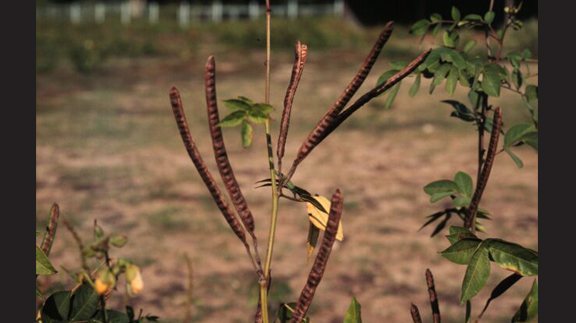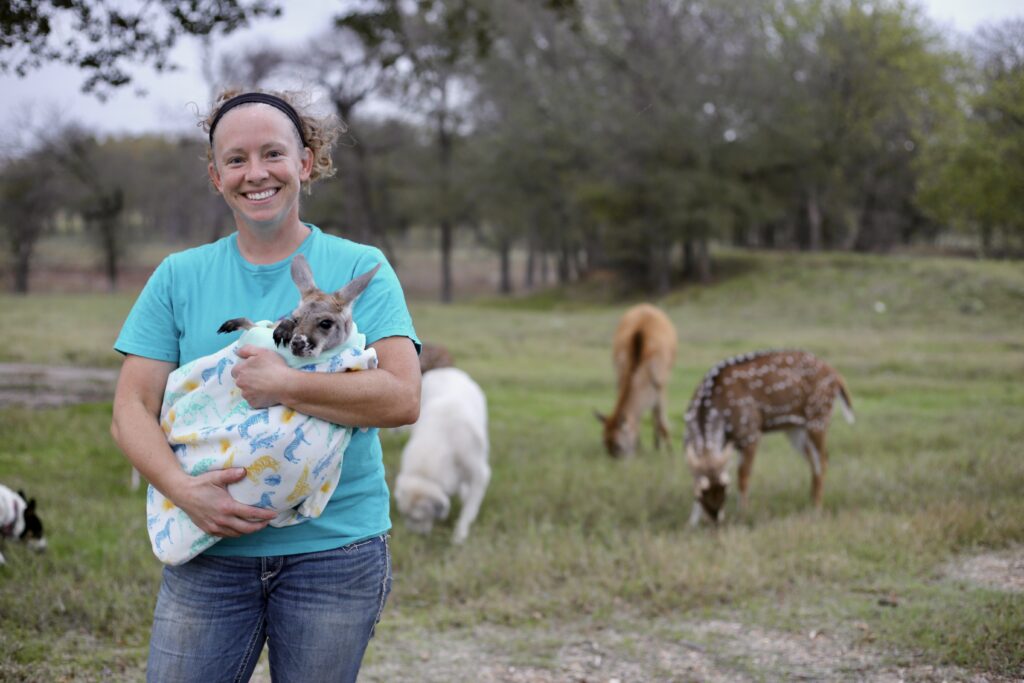Farm & Ranch
Livestock producers urged to watch for toxic plants

By: Blair Fannin
Photo caption: Coffee senna is a plant with 6-8 inch beans that can become toxic to livestock due to extreme heat and dry conditions. (Texas A&M Veterinary Medical Diagnostic Laboratory photo)
Extreme heat, dry conditions can lead to possible losses
Writer: Blair Fannin, 979-845-2259, [email protected]
Contact: Dr. Tam Garland, 979-845-3414, [email protected]
COLLEGE STATION – Extreme heat and dry conditions can lead to a shortage of grass, and an opportunity to consume toxic plants and forages found in Texas rangelands. Livestock producers should be aware of potential pitfalls, according to a Texas A&M Veterinary Medical Diagnostics Laboratory expert.
Dr. Tam Garland, head of the lab’s toxicology section in College Station, advises cattle producers to scout pastures and be on the lookout for four types of senna plants that can be toxic during different seasons and weather patterns: coffee senna, twinleaf senna, sicklepod senna and Lindheimer senna.
Of late, extremely high temperatures without rain have stressed grasses. Livestock try other plants that remain green, Garland said. Coffee senna is maturing and is still green, and Garland said cattle will find these more palatable as the fall season approaches.
“Just like humans, cattle will want variety in their diet and they find the coffee senna beans quite tasty as forages become less available,” she said.
The plant will have 6–to 8-inch-long beans that grow upward rather than downward, forming a type of parenthesis around the center stalk of the plant.
Twinleaf senna will become more prevalent with frequent showers. Garland said this perennial plant will grow beside other weeds in the pasture.
“People think when they get rain they’ve got a lot grass in the pasture, but there are other weeds that can pop up,” Garland said. “This is typical of twinleaf senna
that is found growing in Central and West Texas regions where there’s limestone soils.”
Though herbicides applied to pastures earlier this year can control the threat of toxic forages and weeds, there’s still the potential for high winds to blow seeds into these areas.
“It’s still important for ranchers to scout pastures and be on the lookout,” Garland said. “The biggest problem is we don’t notice subtle clinical signs in our livestock, nor do we scout our pastures and look for these potentially toxic plants.”
Ranchers should observe their cattle. Those excreting dark urine and having consumed coffee senna, and also twinleaf senna if there has been rain, will have clinical signs such as diarrhea and weakness before they get down.
“And when they get down, they do not get up,” Garland said. “That’s why it’s so important for daily observation of cattle and to scout pastures. These are what we call alert downers. They will eat and drink if food and water is taken to them, but they cannot get up.”
For more information about these and other toxic plants, Garland has co-authored Toxic Plants of Texas, available at the AgriLife Bookstore: http://www.agrilifebookstore.org/Toxic-Plants-of-Texas-p/b-6105.htm .
Additionally, the lab can determine if livestock have ingested one of these potentially deadly plants. For more information on testing, visit http://tvmdl.tamu.edu/tests/microscopic-analysis .
-30-
Find more stories, photos, videos and audio at http://today.agrilife.org
Farm & Ranch
Managing Show Cattle Through The Winter

By Heather Welper
Husband and wife duo, Heather and Calvin Welper, are the Co-Owners and Operators or Two C Livestock, located in Valley View, Texas.
The pair’s operation has a show cattle focus where they raise and sell purebred heifers of all breeds and club calf Hereford steers.
When it comes to show cattle, the Welpers know a thing or two including how to prepare for the cold winter months and the Texas major show season run.
To read more, pick up a copy of the November edition of North Texas Farm & Ranch magazine, available digitally and in print. To subscribe by mail, call 940-872-5922.

Farm & Ranch
Double M Ranch & Rescue

By Hannah Claxton, Editor
As the sun rises each day, so do the dozens of mouths that Meghan McGovern is responsible for getting fed. Rather than the sounds of a rooster crowing, McGovern hears the bellows and bleats of a variety of exotic deer, the chortle of kangaroos, the grunts of water buffaloes, and the chirps of a lemur.
Nestled against the banks of the Red River, the Double M Ranch and Rescue, with its high game fences and deer sprinkling the landscape,s its in stark contrast to the surrounding ranches.
“Having deer is kind of like eating potato chips- you can never actually have just one,” said McGovern with a laugh.
McGovern has several herds to take care of- fallow deer, axis deer, water buffalo, goats, and bison. In smaller numbers, there’s also a few kangaroos, a lemur, a potbelly pig, a pair of zebras, a watusi, and a few horses.
To read more, pick up a copy of the November edition of North Texas Farm & Ranch magazine, available digitally and in print. To subscribe by mail, call 940-872-5922.

Farm & Ranch
Acorn Toxicity

By Barry Whitworth, DVM, MPH
With the prolonged drought, most pastures in Oklahoma end up in poor condition. With the lack of available forage, animals may go in search of alternative foods.
If oak trees are in the pastures, acorns may be a favorite meal for some livestock in the fall. This may result in oak poisoning.
Oak leaves, twigs, buds, and acorns may be toxic to some animals when consumed.
To read more, pick up a copy of the November edition of North Texas Farm & Ranch magazine, available digitally and in print. To subscribe by mail, call 940-872-5922.

-

 Country Lifestyles2 years ago
Country Lifestyles2 years agoScott & Stacey Schumacher: A Growth Mindset
-

 Country Lifestyles8 years ago
Country Lifestyles8 years agoStyle Your Profile – What your style cowboy hat says about you and new trends in 2017
-

 HOME8 years ago
HOME8 years agoGrazing North Texas – Wilman Lovegrass
-

 Equine1 year ago
Equine1 year agoThe Will to Win
-

 Country Lifestyles5 years ago
Country Lifestyles5 years agoAmber Crawford, Breakaway Roper
-

 Outdoor10 years ago
Outdoor10 years agoButtercup or Primrose?
-

 Country Lifestyles9 years ago
Country Lifestyles9 years agoJune 2016 Profile – The man behind the mic: Bob Tallman
-

 Country Lifestyles8 years ago
Country Lifestyles8 years agoDecember 2016 Profile, Rusty Riddle – The Riddle Way




